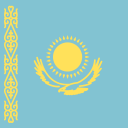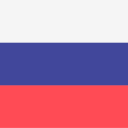ETYMOLOGY AND THE MAIN MEANING OF SOME MONETARY UNITS IN THE KAZAKH LANGUAGE
DOI:
https://doi.org/10.55808/1999-4214.2024-2.03Abstract
There were many words in the Kazakh language that meant «money» or were used as the name of a currency. Among such names of money, words such as «altyn, kumis, aksha, tenge, tiyn» are still actively used in the Kazakh language. But the currency meaning of the words «altyn» and «kumis» was eventually forgotten, and the semantics of precious metals remained. The term
«tenge» re-entered the active circulation of the language after this historical word was chosen as the national currency in 1993. The financial terms «pul, som, manat, bakyr, shaka, zharmak, zhamby, kuresh» have become historicisms. Including the words «bakyr, zhamby» have acquired a new and derivative meaning. Despite the fact that words like «pul, bakyr, som» are less often used, but still some older people say the word «som» instead of «tenge». In particular, the word «pul» has already begun to be used as part of new terms such as «aiyppul» or «osimpul» and so it has re-entered the language. Among the names of monetary units, Arabic-Persian words like «dinar, dilda, dirham, manat» were also used in the Kazakh steppes. Although they themselves fell out of use as money, they remained in maiden names like Dinara, Dilda, Manat. The article analyzes the history of use, semantic character and origin of the terms «tenge, tiyn, aksha, som, bakyr, pul, shaka, dilda» found in the works of Abai and Shakarim and used in Turkic languages, based on the ancient or medieval Turkic written heritage and data of related and unrelated languages.


 Қазақ тілі
Қазақ тілі
 Русский
Русский
 English
English








